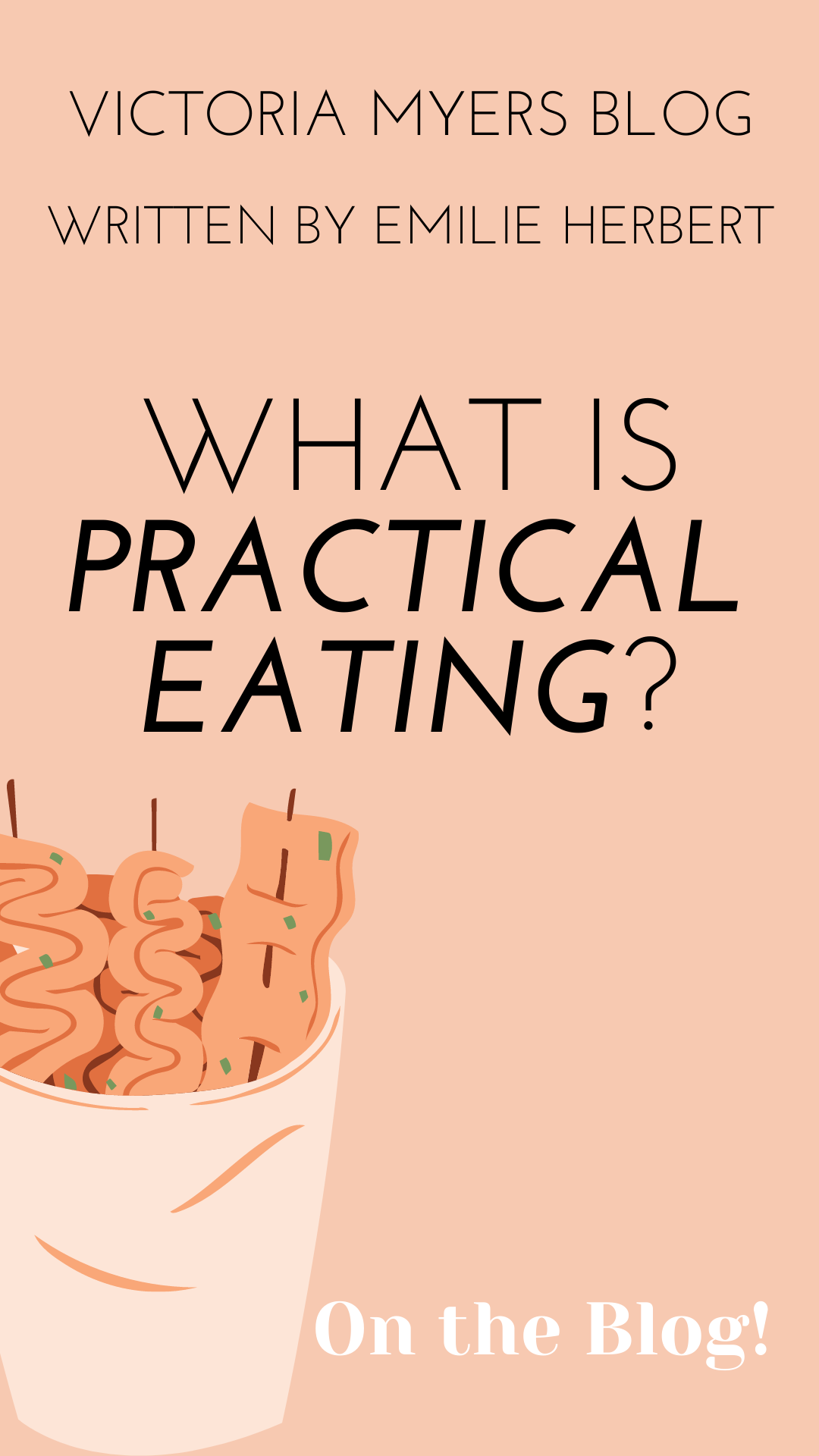What is Practical Eating?
by: Emilie Hebert, dietitian at Nourishing Minds Nutrition
Have you ever been in a situation when you weren’t necessarily physically hungry in the moment, but you knew you needed to eat? Maybe you were leaving for a road trip and you wouldn’t be stopping for 3+ hours, or you only had a short window to eat lunch before you got back to work. If that sounds familiar, you’ve encountered practical eating!
Practical eating is eating when you’re not feeling signs of physical hunger, but you recognize that it is necessary to fuel yourself. If you’re thinking, “wait, I thought intuitive eating was all about hunger and fullness?!” …I totally understand. That’s often how it presents on social media! However, even if we are committed to practicing intuitive eating, we won’t always have the opportunity to choose exactly what we’re craving, start eating when we’re “perfectly” hungry, and stop when we’re “perfectly” full. (You can read this post on how to not make intuitive eating a hunger-fullness diet.)
In fact, the authors of Intuitive Eating discuss four different types of hunger: primal or biological hunger, taste hunger, emotional hunger, and practical hunger. Notice how only one of those types of hunger directly involves feeling physically hungry! There are so many reasons why we eat—to satisfy a growling stomach, to celebrate, to cope with hard emotions, and, in the case of practical eating, to take care of ourselves even if we’re not feeling the signs of biological hunger.
Here are some examples of when you may need to use practical eating:
You’re not going to have the opportunity to eat for more than 3-4 hours, such as in the road trip or work examples above.
You are in recovery for disordered eating and/or chronic under-eating, and you are not receiving reliable hunger cues.
You have a mental health condition (such as anxiety or depression) in which the condition or the treatment medication suppresses your appetite.
Another type of medication suppresses your appetite.
In the case of not having access to food for multiple hours (such as if you work a long shift as a healthcare worker), the main focus of practical eating is providing you with sustained energy until you can eat again. This may look like a solid meal with carbohydrates, protein, fat, and vegetables/fruit. Examples of this are:
Quesadilla with choice of protein and cheese, with sauteed peppers and onions
Sandwich with a piece of fruit
Sushi bowl
Frozen meal that has all the above elements
In the case of appetite suppression due to disordered eating, a medical condition, or a medication, the main focuses are providing you with sustained energy and tolerance. I find that for many people who struggle in this situation, especially if there is a co-existing mental health condition, having to decide on what to eat is a huge barrier to eating. This is mentally taxing if someone is needing to make these hard decisions 5+ times per day!
If you resonate with one of experiences above, I recommend making a list of 3-5 meals and 3-5 snacks that you enjoy and that you know digest well for you. Write out everything you need for each option and try to keep those groceries on hand as often as possible. This way, you don’t have to decide what to eat in a practical eating situation—you can consult your list of meals and snacks! Keep it simple with options like a tuna salad sandwich, frozen burrito, or bagged salad kit; you don’t want to have to make a complex meal or snack when you’re not up for it.
Most of the time, stick with the formula I mentioned above for meals that will fuel you for 3-4 hours: carbohydrates, protein, fat, and vegetables/fruit. However, if all you can tolerate some days is toast or pizza, that’s fine, too!
For any practical eating situation, I encourage you to have some frozen or pre-prepared meals on hand for these practical eating situations. Often when we are not physically hungry, it is easy for us to talk ourselves out of cooking and eating. However, if we have meals on hand that can be easily microwaved or eaten as-is, it will be easier to fuel ourselves when we know it is best for us.
Eating when we’re not physically hungry may feel like it’s going “against” intuitive eating—but in reality, practical eating is helping us fuel ourselves in the best way we can, and that’s what intuitive eating is all about!







